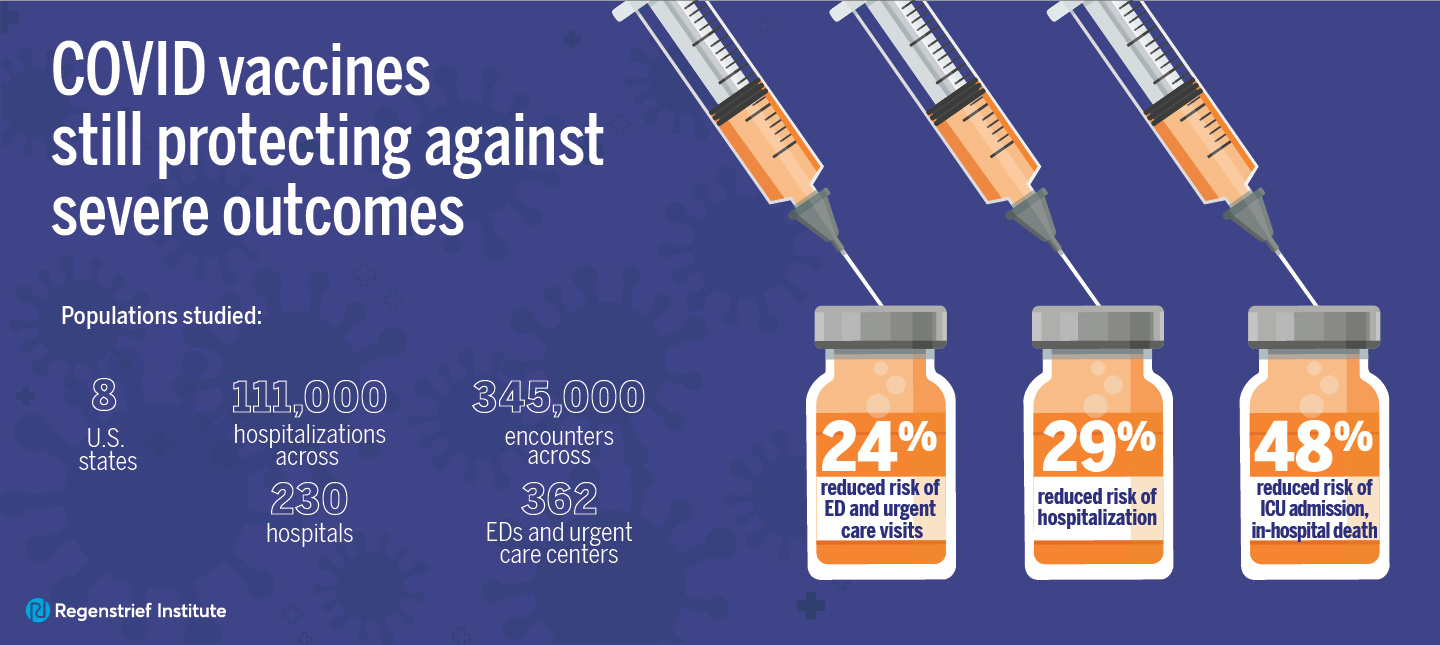A behavioral trial of women living in 98 rural Ohio and Indiana counties improved breast, cervical and colorectal cancer screening rates in a population that typically has had low screening rates.
The remotely delivered, targeted outreach to women who were not current with one or more of these three cancer screenings, significantly increased uptake by this difficult-to-reach population at relatively modest costs.
Regenstrief Institute Research Scientist Eric Vachon, PhD, RN, and Affiliated Scientists Victoria Champion, PhD, (first author) and Patrick Monahan, PhD, are co-authors of The Rural Interventions for Screening Effectiveness (RISE) study. RISE is believed to be the first intervention to increase rural women’s simultaneous adherence to all three of the U.S. Preventive Task Force guideline-recommended cancer screenings.
The research team included Indiana University, Regenstrief Institute and The Ohio State University.
The three-arm randomized RISE preventive care trial compared effectiveness of usual care against two groups: 1) a mailed interactive DVD and 2) a mailed DVD and patient navigation as described below:
- Usual care of health-related newsletters consisting of information such as healthy diet strategies;
- An interactive DVD developed by the researchers and tailored to the woman to whom it was mailed; or
- A tailored interactive DVD plus personalized telecare provided telephonically (on average three times) by a social worker trained as a patient navigator.
Specific research partners in the study include the Indiana University School of Nursing, Indiana University Melvin and Bren Simon Comprehensive Cancer Center, Regenstrief Institute, Indiana University School of Medicine and The Ohio State University Comprehensive Cancer Center – Arthur G. James Cancer Hospital and Richard J. Solove Research Institute.
“In terms of increasing all needed screening rates for rural women, we found that for the usual care group, only 10 percent of women received all the needed screenings – a very small percentage,” said Dr. Vachon. “But 15 percent of the women in the DVD group received all their needed screenings. So, we see about a 50 percent increase there.
“And then if we look at the navigator+DVD group, we found that 30 percent of those women received all their needed screenings. So, the patient navigator plus DVD intervention was twice as effective as the DVD alone and three times as effective as usual care in terms of increasing screening for the women in our study – a significant increase.”
The researchers noted:
- Prior to the study, breast cancer screening rates of study participants were higher than screening rates for either cervical or colorectal cancers.
- The screening rate for colorectal cancer was the lowest of the three.
- Study participants had greater odds of becoming up to date with all three cancer screenings
- if only one screening was needed or
- if breast cancer was one of two screenings needed.
Study participants were recruited using several strategies including personal contact at community events and social media. English speaking women, without previous cancer diagnosis, age 50 to 75, living in rural areas, who were not current on one or more cancer screenings were enrolled in the study. Ninety-seven percent were White. Only 5 percent did not have health insurance.
A total of 963 women were included in the study’s final analysis, with 193 in the usual-care arm; 382 in the DVD-only arm and 388 in the DVD-plus-patient navigator arm. The DVD was completely narrated, making it accessible regardless of education level.
At the time of the study (2016-2019), participants had limited internet access. Delivery of material via mail was considered the best way to reach the rural women. All participants had the technology necessary to use the interactive DVD. The study authors note that as DVDs are becoming obsolete and other technologies become more accessible to the study population, the strategies they developed for the study can be converted into online tools accessed from a computer, tablet or smartphone.
“Results of this study yield important data to implement interventions that increase cancer screening in rural women,” said Dr. Champion. “First, it is possible and efficacious to simultaneously combine interventions that support breast, cervical and colon cancer screening yielding a wholistic approach to early detection of cancer. Secondly, we have technology available to overcome previous barriers such as rurality/access to care. Finally, this wholistic approach to cancer prevention and screening could be adapted to other behaviors that would also serve to reduce our national cancer burden.”
Regarding cost effectiveness, the study authors wrote, “Compared to treating cancer, the costs of each intervention to bring women up to date with screening were relatively modest, as on average, cancer treatment costs $150,000 per patient in the U.S.; thus, the additional costs required for the addition of patient navigators to improve screening likely can result in cost savings by avoiding cancer deaths or treatment at more advanced stages.”
“Comparative Effectiveness of 2 Interventions to Increase Breast, Cervical, and Colorectal Cancer Screening Among Women in the Rural US” is published in JAMA Network Open.
This research was supported by the National Cancer Institute (NCI) of the National Institutes of Health (NIH) with award R01CA196243.
Authors
Victoria L. Champion, PhD, RN, FAAN1,2, Electra D. Paskett, PhD3,4, Timothy E. Stump, MS2,5, Erika B. Biederman, PhD, RN3, Eric Vachon, PhD, RN1,2,8, Mira L. Katz, PhD3,6, Susan M. Rawl, PhD, RN, FAAHB, FAAN1,2, Ryan D. Baltic, MPH3, Carla D. Kettler, BS2,5, Eric E. Seiber, PhD7, Wendy Y. Xu, PhD7, and Patrick O. Monahan, PhD2,5
Affiliations
1School of Nursing, Indiana University, Indianapolis, IN 46202, USA
2Indiana University Melvin and Bren Simon Comprehensive Cancer Center, Indianapolis, IN 46202, USA
3Comprehensive Cancer Center, The Ohio State University (OSU), Columbus, OH 43210, USA
4Division of Cancer Prevention and Control, Department of Medicine, College of Medicine, The Ohio State University, Columbus, OH 43210, USA
5Department of Biostatistics and Health Data Science, Indiana University School of Medicine, Indianapolis, IN 46202, USA
6Division of Health Behavior and Health Promotion, College of Public Health, The Ohio State University, Columbus, OH, 43210. USA
7Division of Health Services Management and Policy, The Ohio State University, Columbus, OH, 43210. USA
8Center for Health Services Research, Regenstrief Institute, Indianapolis, IN, 46202, USA
About Eric Vachon, PhD, R.N.
In addition to being a research scientist at the Regenstrief Institute, Eric Vachon, PhD, R.N., is an assistant professor at Indiana University School of Nursing and a researcher at the Indiana University Melvin and Bren Simon Comprehensive Cancer Center.
About Victoria Champion, PhD
In addition to being an affiliated scientist with the Regenstrief Institute, Victoria Champion, PhD, is a Distinguished Professor of Nursing and the Edward and Sarah Stam Cullipher Endowed Chair at Indiana University School of Nursing and serves as the Indiana University Melvin and Bren Simon Comprehensive Cancer Center’s Associate Director of Community Outreach and Population Science.
About Regenstrief Institute
Founded in 1969 in Indianapolis, the Regenstrief Institute is a local, national and global leader dedicated to a world where better information empowers people to end disease and realize true health. A key research partner to Indiana University, Regenstrief and its research scientists are responsible for a growing number of major healthcare innovations and studies. Examples range from the development of global health information technology standards that enable the use and interoperability of electronic health records to improving patient-physician communications, to creating models of care that inform practice and improve the lives of patients around the globe.
Sam Regenstrief, a nationally successful entrepreneur from Connersville, Indiana, founded the institute with the goal of making healthcare more efficient and accessible for everyone. His vision continues to guide the institute’s research mission.
About IU School of Nursing
Indiana University School of Nursing was established in 1914 with the opening of Long Hospital in Indianapolis, Indiana. The School unites into a core structure with three campus locations: Bloomington, Indianapolis (IUPUI), and Fort Wayne. Almost 23,000 alumni across the globe are leaders in clinical practice, research, education, and innovation. The Master’s and DNP programs were named to the 2023 U.S. News & World Report Best Graduate Nursing Schools and in 2023 U.S. News & World Report Best Online Programs ranked the Master’s #10 in the nation. The National League for Nursing has designated the School as a Center of Excellence in Nursing Education in two areas. Academic programs include three tracks in the undergraduate program, nine tracks in the master’s program, post-master’s options, a post-masters DNP, and a PhD. The School is known for a robust program of research focused on quality of life in chronic illness, nursing education, and cancer prevention.









